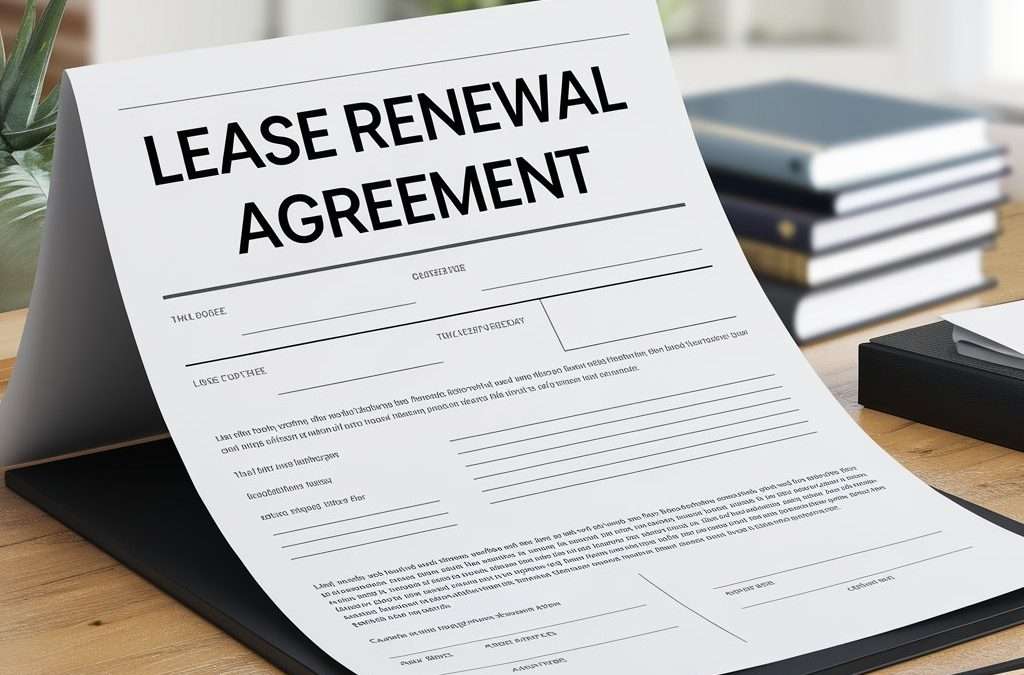Lease renewals are a critical part of property management, especially for landlords seeking to maintain steady rental income. A well-prepared lease renewal agreement can foster strong tenant relationships while protecting your interests. In San Mateo, where local regulations and market dynamics play a significant role, understanding how to navigate lease renewals is essential. This guide outlines the key elements of a lease renewal agreement, offering practical drafting tips, insights into common pitfalls, and a look at local considerations to help you create effective, legally sound agreements.
Understanding Lease Renewal Agreements
A lease renewal agreement extends the original lease, allowing both landlord and tenant to continue the rental arrangement without starting from scratch. It typically outlines any changes in rent, duration, or terms while confirming the ongoing commitment between both parties. For landlords in San Mateo, clarity is crucial—this agreement is not only a renewal of terms but also a reinforcement of trust and professionalism. By formalizing any adjustments in writing, you minimize potential disputes and ensure that both parties fully understand their rights and obligations. This proactive approach can lead to improved tenant satisfaction and reduce vacancies.
Essential Components of a Lease Renewal Agreement
A robust lease renewal agreement should include several core elements to protect both parties:
- Renewal Term: Clearly state the new lease period.
- Rent Adjustments: Detail any changes in rental fees or payment schedules.
- Modified Clauses: Include updates to existing terms, such as maintenance responsibilities or pet policies.
- Legal Compliance: Ensure that all modifications comply with local, state, and federal laws, especially considering San Mateo’s evolving regulations.
- Dispute Resolution: Outline a method for resolving any disagreements, whether through mediation or arbitration. Including these components not only provides legal protection but also lays a clear foundation for the renewed rental relationship.
Drafting Tips for Effective Lease Renewals
When drafting your lease renewal form, simplicity and precision are key. Begin by reviewing the original lease to identify areas that require updates. Use clear, straightforward language to avoid ambiguity, ensuring that both parties understand every clause. It’s beneficial to consult with a legal expert knowledgeable in California’s landlord-tenant laws to ensure your document meets all regulatory requirements. Additionally, consider including a summary of key changes at the start of the document. This summary can serve as a quick reference guide, highlighting modifications such as rent increases or extended lease terms. By following these tips, you create an agreement that not only protects your interests but also encourages open communication with your tenants.
Avoiding Common Pitfalls
Even a well-intentioned lease renewal can run into issues if not carefully managed. Common pitfalls include neglecting to update essential terms, which may lead to disputes or misunderstandings. Overly complex language can also confuse tenants, so strive for clarity and brevity. Failing to include a dispute resolution mechanism is another frequent oversight. Without a clear process in place, minor issues can escalate into costly legal challenges. Moreover, it is vital to ensure that your agreement complies with the latest local regulations in San Mateo. Avoiding these pitfalls will help you create a renewal agreement that is both effective and enforceable, safeguarding your property investment.
Local Considerations in San Mateo
For landlords operating in San Mateo, local regulations and market conditions are critical factors in drafting a lease renewal agreement. San Mateo’s rental market is subject to specific guidelines that can affect rent increases, notification periods, and other lease terms. Familiarize yourself with these local ordinances to ensure your agreement adheres to current laws. Tailoring your lease renewal to reflect the local environment not only ensures compliance but also enhances tenant trust by demonstrating your commitment to fair and responsible property management. Consider incorporating clauses that allow for periodic reviews of rental terms in response to market shifts. This flexibility can be a significant advantage in a competitive rental market, helping you retain quality tenants over the long term.
Conclusion
A well-crafted lease renewal agreement is an invaluable tool for landlords looking to maintain a consistent rental income while fostering positive tenant relationships. By understanding the purpose of a lease renewal, including essential components, and following clear drafting tips, you can create a document that is both legally sound and easy for tenants to understand. Avoiding common pitfalls and incorporating local considerations will further strengthen your agreement. Ultimately, a proactive approach to lease renewals not only protects your investment but also builds a foundation of trust and transparency that benefits both you and your tenants.


